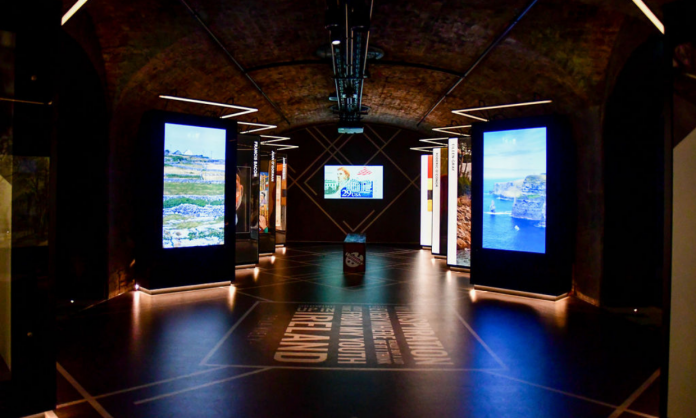By Orla O’Dea
When we imagine the Irish diaspora we cannot help but be brought back to one of the most traumatic times in our history. The Great Famine of 1845 resulted in death, malnutrition and mass emigration, reducing the population dramatically; Ireland’s population fell from almost 8.4 million in 1844 to 6.6 million by 1851. About 1 million people died and perhaps 2 million more eventually emigrated from the country. When faced with shocking statistics like this many things come to mind, the first being erroneous British policy over consecutive years.
One such stark example is the closure of the soup kitchens in Autumn of 1847; even though ‘by August 1847, about 3 million people were being fed each day in total… the government shut down the soup kitchens. They expected that the next crop of potatoes might be good and told poor people that they could go to the workhouses for help’. Assistant Secretary to the Treasury, Charles Trevelyan in charge of the administration of government relief, believed that the famine was a “judgement of God…who sent the calamity to teach the Irish a lesson”.
Another image that comes to mind is forced labour, the creation of famine roads as Boland describes in The Famine Road ‘roads to force/From nowhere, going nowhere of course’. Iconic sculptures appear before our eyes like that of the National Famine Memorial in Carrowkeel, Co. Mayo, a famine ship, its grim silhouette against the wild Atlantic Ocean, serving as a grim reminder of this time.
Rowan Gillespie’s striking bronze sculptures at Custom House Key, show us haunted figures poignantly placed next to the Jeanie Johnston famine ship, also known as coffin ships at the time. This vessel was primarily built as a cargo vessel but would eventually make numerous transatlantic journeys ‘Between 1848 and 1855, the Jeanie Johnston made 16 voyages from Ireland to North America, sailing from Co. Kerry to Quebec, Baltimore, and even New York’.
These are just some of the many thoughts that come to mind when we think of Irish emigration. Yet perhaps what is most difficult to conjure in our minds’ eye when faced with staggering statistics, is the people behind these numbers. Such young men and women, left to face the unknown, so often alone, so often bereft of family and friends. We know when we consider these dark times from our past that ‘Sometimes you have to risk death in order to escape it. The brave, the bold and the desperate follow in the footsteps of those who fled the famine’.
Their stories are not something we can view like so much history, on display in a glass cabinet, an artefact, something concrete for us to analyse and make sense of. They account for how Irish culture has ingrained itself into communities far and wide in a truly deep and meaningful way. President John F Kennedy famously stated on his presidential visit to Ireland in June 1963 ‘Most countries send out oil or iron, steel or gold, or some other crop, but Ireland has had only one export and that is its people.’
We might be startled to realise that ‘no country in Europe has been as affected by emigration over the last two centuries as Ireland. Approximately ten million people have emigrated from the island Ireland since 1800’. Yet when we begin to follow the numbers in terms of actual people and their stories what opens up is little more than astounding in terms of just how far reaching our culture is.
EPIC is based in The CHQ Building in an historic location in Dublin by the banks of the River Liffey on Custom House Quay. What is brought to life in this interactive museum is these very stories in a way that makes all of the facts and figures real and relatable. We learn not just of the effects of the famine on emigration but of the expansive influence of the Irish in terms of music, sport, politics, literature, film, fashion and science. What becomes quickly apparent is a vast array of talent across many disciplines.
From the fiddle playing of Michael Coleman to the activism of Annie Besant, the writings of Joyce and Beckett to the memorable penalty save by Packie Bonner, this variety across many spectrums proves to be engaging as well as inspiring. Those who could so easily have been forgotten are immortalised. Montages created of memorable moments in the 20th century are simultaneously nostalgic and moving, from political turbulence and economic depression to footage of Ireland as the first country in the world to legalise gay marriage. What is clear is that an understanding of our history of emigration helps us to ‘define who we are and the importance of the Irish Diaspora in the cultural, political and economic development of Ireland’ and communities around the world.








